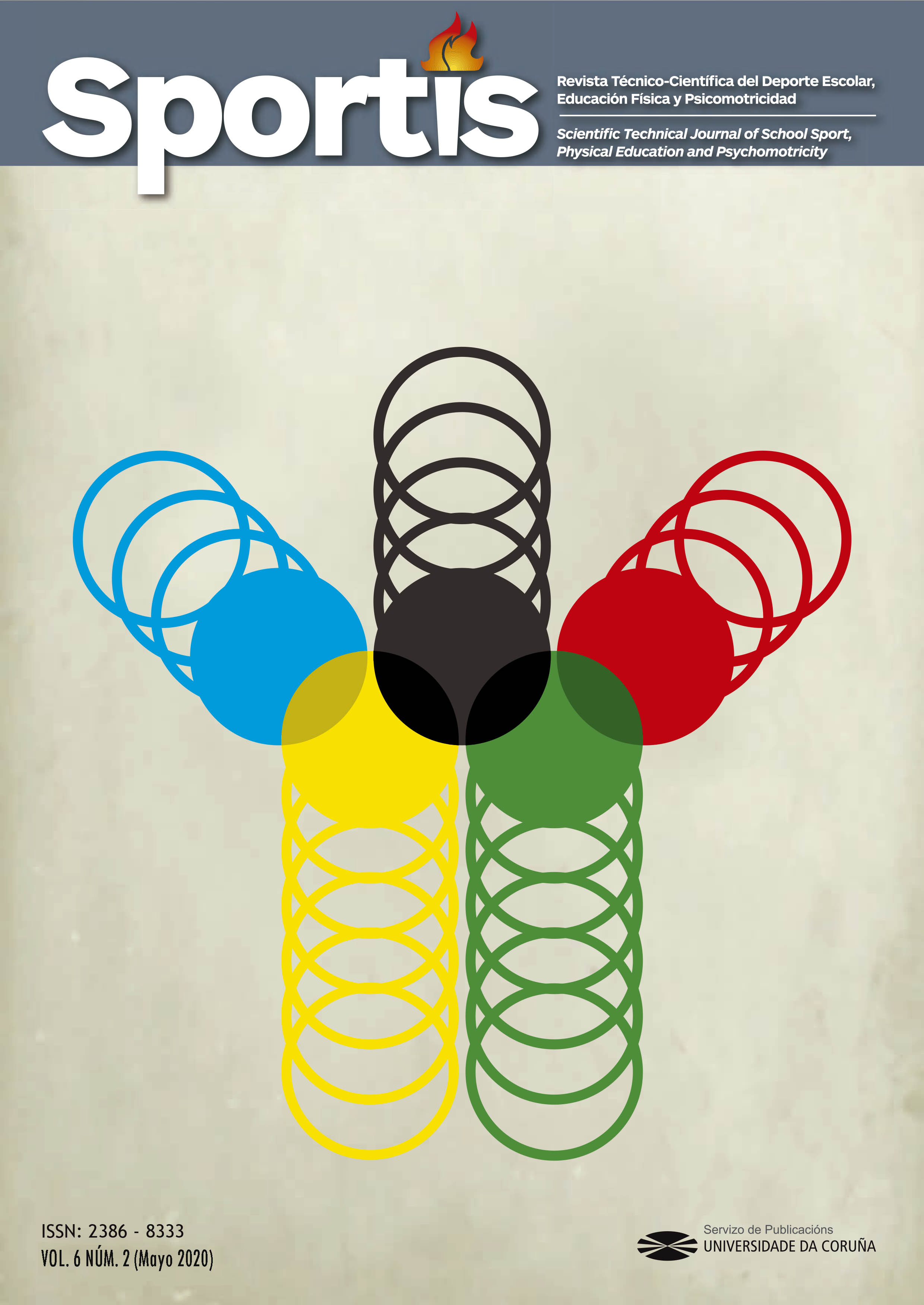Do Spanish minors, in their free time, prefer electronic devices or physical activity?
Main Article Content
Abstract
The new generations live exposed daily to stimuli from electronic devices that are associated with maintaining sedentary behavior. So far, the possible relationships between the different components of lifestyle have not been explored in a representative sample of the population of Spanish minors. For this reason, this research was designed with the objectives of examining the degree of exposure to screens of Spanish children and identifying possible relationships in their lifestyle and other habits such as exercising and resting hours, as well as determining whether some of them influence your mental health. The results obtained showed that the exposure of Spanish children to screens is 15 hours a week, and that their lifestyle, although it could be improved, falls within health standards in terms of hours of rest and physical activity habits. The preventive policies of abuse of electronic devices in minors in Spain should place special emphasis on the sector with the worst results in the variables of mental health obtained in the present investigation: children under 7 years of age and with poor night-time rest habits and / or more hours of exposure to screens.
Keywords:
Downloads
Article Details
References
Abalde-Amoedo, N., y Pino-Juste, M. (2015). Influencia de la actividad física y el sobrepeso en el rendimiento académico: revisión teórica. Sportis. Scientific Journal of School Sport, Physical Education and Psychomotricity, 2(1), 147-161. DOI: https://doi.org/10.17979/sportis.2016.2.1.1446
Alfonso-Rosa, R. (2016). Relación entre la actividad física extraescolar y el rendimiento académico en alumnos de Educación Secundaria. Sportis. Scientific Journal of School Sport, Physical Education and Psychomotricity, 2(2), 177-187. DOI: https://doi.org/10.17979/sportis.2016.2.2.1428
Arufe Giráldez, Víctor (2019). Fortnite EF un nuevo juego deportivo para el aula de Educación Física. Propuesta de innovación y gamificación basada en el videojuego Fortnite. Sportis Sci J, 5 (2), 323-350. DOI: https://doi.org/10.17979/sportis.2019.5.2.5257
Brown, A., y Smolenaers, E. (2018). Parents' interpretations of screen time recommendations for children younger than 2 years. Journal of Family Issues, 39(2), 406-429. DOI: https://doi.org/10.1177/0192513X16646595
Castro-Sánchez, M., Linares-Manrique, M., Sanromán-Mata, S., y Pérez Cortés, A. (2017). Análisis de los comportamientos sedentarios, práctica de actividad física y uso de videojuegos en adolescentes. Sportis. Scientific Journal of School Sport, Physical Education and Psychomotricity, 3(2), 241-255. DOI: https://doi.org/10.17979/sportis.2017.3.2.1746
Cole, T. J., Flegal, K. M., Nicholls, D., y Jackson, A. A. (2007). Body mass index cut offs to define thinness in children and adolescents: International survey. British Medical Journal (Clinical Research Ed.), 335(7612), 194. DOI: https://doi.org/10.1136/bmj.39238.399444.55
Duggan, M. P., Taveras, E. M., Gerber, M. W., Horan, C. M., y Oreskovic, N. M. (2019). Presence of small screens in bedrooms is associated with shorter sleep duration and later bedtimes in children with obesity. Academic Pediatrics, 19(5), 515-519. DOI: https://doi.org/10.1016/j.acap.2018.11.004
Emond, J. A., Tantum, L. K., Gilbert-Diamond, D., Kim S. J., Lansigan, R. K. y Benjamin-Neelon, S. E. (2018). Household chaos and screen media use among preschool-aged children: A cross-sectional study. BMC Public Health, 18, 1210. DOI: https://doi.org/10.1186/s12889-018-6113-2
Goodman, R. (2001). Psychometric properties of the strengths and difficulties questionnaire. Journal of the American Academy of Child & Adolescent Psychiatry, 40(11), 1337-1345. DOI: https://doi.org/10.1097/00004583-200111000-00015
Hale, L., y Guan, S. (2015). Screen time and sleep among school-aged children and adolescents: A systematic literature review. Sleep Medicine Reviews, 21, 50-58. DOI: https://doi.org/10.1016/j.smrv.2014.07.007
Keane, E., Kelly, C., Molcho, M., y Gabhainn, S. N. (2017). Physical activity, screen time and the risk of subjective health complaints in school-aged children. Preventive Medicine, 96, 21-27. DOI: https://doi.org/10.1016/j.ypmed.2016.12.011
Lissak, G. (2018). Adverse physiological and psychological effects of screen time on children and adolescents: Literature review and case study. Environmental Research, 164, 149-157. DOI: https://doi.org/10.1016/j.envres.2018.01.015
Livingstone, S., y Franklin, K. (2018). Families with young children and 'screen time'. Journal of Health Visiting, 6(9), 434-439. DOI: https://doi.org/10.12968/johv.2018.6.9.434
Maher, C., Virgara, R., Okely, T., Stanley, R., Watson, M., y Lewis, L. (2019). Physical activity and screen time in out of school hours care: An observational study. BMC Pediatrics, 19(1), 1-10. DOI: https://doi.org/10.1186/s12887-019-1653-x
Monsalve-Robayo, A., Mora-Caro, L. F., Ramírez-López, L. C., Rozo-Hernández, V., y Rojas-Puerto, D. M. (2017). Estrategias de intervención dirigidas a niños con trastorno negativista desafiante, una revisión de la literatura. Revista Ciencias De La Salud, 15(1), 105-127. DOI: https://doi.org/10.12804/revistas.urosario.edu.co/revsalud/a.5384
Nightingale, C. M., Rudnicka, A. R., Donin, A. S., Sattar, N., Cook, D. G., Whincup, P. H., y Owen, C. G. (2017). Screen time is associated with adiposity and insulin resistance in children. Archives of Disease in Childhood, 102(7), 612-616. DOI: https://doi.org/10.1136/archdischild-2016-312016
Oliver, M., Schofield, G. M., y Kolt, G. S. (2007). Physical activity in preschoolers. Sports Medicine, 37(12), 1045-1070. DOI: https://doi.org/10.2165/00007256-200737120-00004
Portolés-Ariño, A., y González-Hernández J. (2016). Perfiles adolescentes según orientación de metas: relación con conductas sedentarias. Sportis. Scientific Journal of School Sport, Physical Education and Psychomotricity, 2(2), 222-238. DOI: https://doi.org/10.17979/sportis.2016.2.2.1436
Ruiz, R. D., y Castañeda, M. A. (2016). Relación entre uso de las nuevas tecnologías y sobrepeso infantil, como problema de salud pública. RqR Enfermería Comunitaria, 4(1), 46-51.
Sánchez-Zafra, M.; Ramirez-Granizo, I.A.; Baez-Mirón, F.; Moreno-Arrebola, R.; Fernández-Revelles, A.B. (2019). Análisis de la relación existente entre el uso de videojuegos y la práctica de actividad física. Sportis Sci J, 5 (1), 118-132. DOI: https://doi.org/10.17979/sportis.2019.5.1.3433
Sezen, H., Kandemir, H., Savik, E., Basmacı Kandemir, S., Kilicaslan, F., Bilinc, H., y Aksoy, N. (2016). Increased oxidative stress in children with attention deficit hyperactivity disorder. Redox Report, 21(6), 248-253. DOI: https://doi.org/10.1080/13510002.2015.1116729
Tandon, P. S., Sasser, T., González, E. S., Whitlock, K. B., Christakis, D. A., y Stein, M. A. (2019). Physical activity, screen time, and sleep in children with ADHD. Journal of Physical Activity and Health, 16(6), 416-422. DOI: https://doi.org/10.1123/jpah.2018-0215
Twenge, J. M., Hisler, G. C., y Krizan, Z. (2019). Associations between screen time and sleep duration are primarily driven by portable electronic devices: Evidence from a population-based study of US children ages 0–17. Sleep Medicine, 56, 211-218. DOI: https://doi.org/10.1016/j.sleep.2018.11.009
World Health Organization. (2019). Global action plan on physical activity 2018-2030: More active people for a healthier world, Geneva, Switzerland: World Health Organization.






